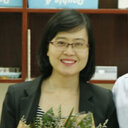Anti-inflammatory coumarins from Paramignya trimera.
キーワード
概要
BACKGROUND
Paramignya trimera (Oliv.) Burkill (Rutaceae) has been used to treat liver diseases and cancer. However, the anti-inflammatory effects of this medicinal plant and its components have not been elucidated.
OBJECTIVE
This study investigated chemical constituents of the P. trimera stems and evaluated anti-inflammatory effects of isolated compounds.
METHODS
Cytotoxicity of isolated compounds (5-40 μM) toward BV2 cells was tested using 3-[4,5-dimethylthiazol-2-yl]-2,5-diphenyltetrazolium bromide (MTT) for 24 h. Inhibitory effects of isolated compounds (5-40 μM) on nitrite and PGE2 concentrations were determined using Griess reaction and PGE2 ELISA kit, respectively (pretreated with the compounds for 3 h and then stimulated for 18 h with LPS). Inhibitory effects of compounds (5-40 μM) on iNOS and COX-2 protein expression were evaluated by Western blot analysis (pretreated with the compounds for 3 h and then stimulated for 24 h with LPS).
RESULTS
Seven coumarins were isolated and identified as: ostruthin (1), ninhvanin (2), 8-geranyl-7-hydroxycoumarin (3), 6-(6',7'-dihydroxy-3',7'-dimethylocta-2'-enyl)-7-hydroxycoumarin (4), 6-(7-hydroperoxy-3,7-dimethylocta-2,5-dienyl)-7-hydroxycoumarin (5), 6-(2-hydroxyethyl)-2,2-dimethyl-2H-1-benzopyran (6), and luvangetin (7). Compounds 1-4 and 7 inhibited NO and PGE2 production in LPS-stimulated BV2 cells, with IC50 values ranging from 9.8 to 46.8 and from 9.4 to 52.8 μM, respectively. Ostruthin (1) and ninhvanin (2) were shown to suppress LPS-induced iNOS and COX-2 protein expression.
CONCLUSIONS
The present study provides a scientific rationale for the use of P. trimera in the prevention and treatment of neuroinflammatory diseases. Ostruthin and ninhvanin might have potential therapeutic effects and should be considered for further development as new anti-neuroinflammatory agents.



